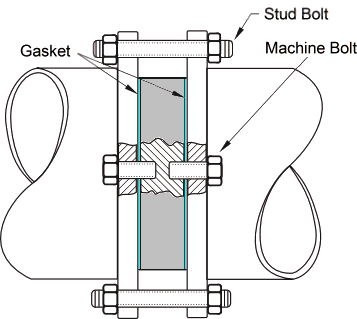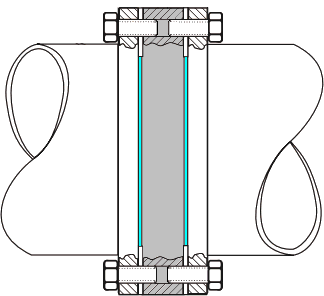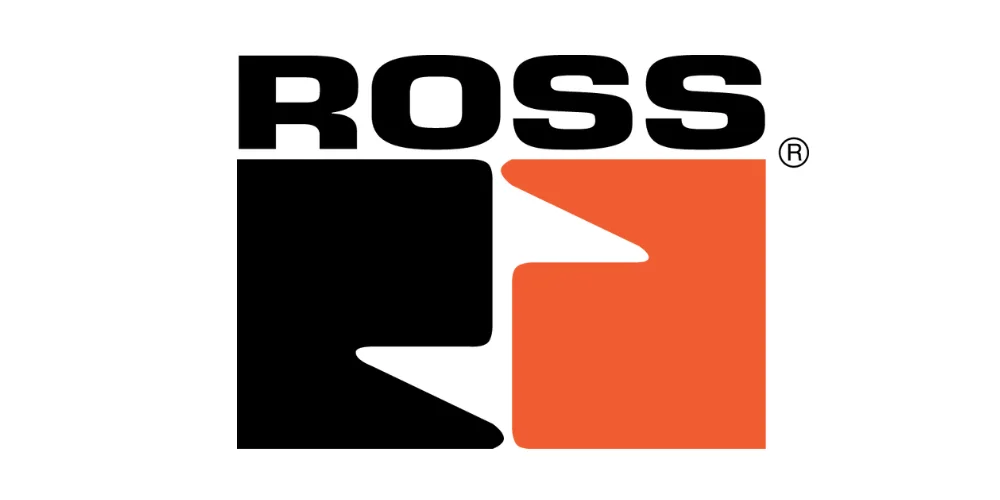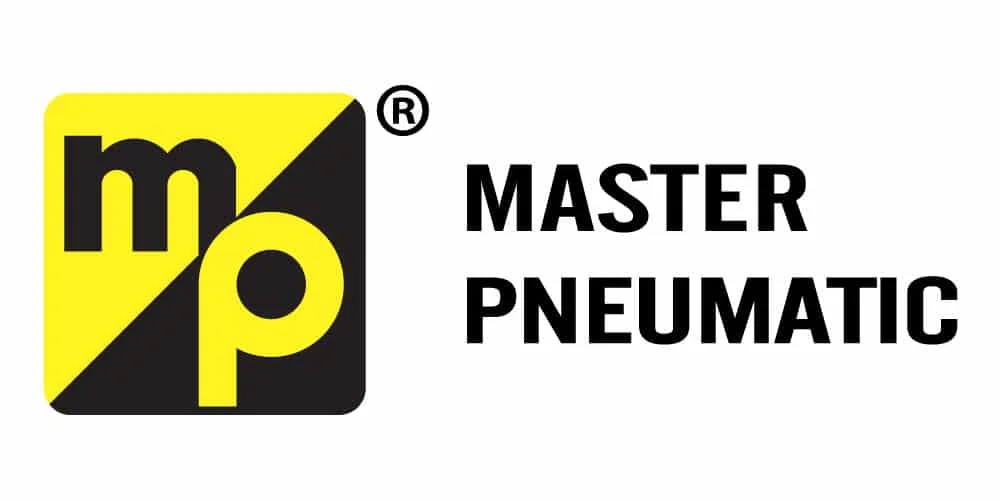What are Butterfly Valves?

A butterfly valve is a quarter-turn rotational motion valve used to control media flow and work similarly to a ball valve. The “butterfly” is a the disc connected to a rod and the valve closes when the rod rotates the by a quarter turn to a position perpendicular to the flow. The valve will open when the disc rotates back allowing the media to flow.
Butterfly valves are used in a wide variety of process line and industries especially in water supply, collection, and distribution, as well as in pumping stations. They also have a broad range of uses especially in flow isolation. They are used for on-off or modulating services are are popular due to their lightweight, small installation footprint, low costs, quick operation, and availability of larger sizes. The butterfly valves can be operated with handles, gears, or automatic actuators.
How Do Butterfly Valves Operate?
Butterfly valves have a simple construction. The main components are the body, seal, disc, and stem. Typically, the disc is positioned in the center of the connected pipe and the stem is connected to the handle or actuator. In the closed position, the disc will be perpendicular to the flow and is sealed by the valve seat. The stem is also sealed by the o-ring. When the handle or actuator rotates the stem back 90°, the disc moves away from the valve seat and is positioned parallel to the flow. Partial rotation allows the flow to be proportional.

Butterfly valves used for modulating services can be engineered to have an equal or linear percentage characteristic:
-
Equal
- When the butterfly valve has an equal percentage characteristic, it means that equal increments of the valve travel produces an equal percentage changes in the flow rate.
- eg. When the disc is opened 1/3 of a turn (30°), the flow rate will be about 33.3% of the maximum flow rate.
- When the butterfly valve has an equal percentage characteristic, it means that equal increments of the valve travel produces an equal percentage changes in the flow rate.
-
Linear
- When the flow rate is in a linear relationship with the amount the disc turns, it means that at when the disc is turned at X%, the flow rate will be at X% of the maximum flow rate. This design creates a logarithmic relationship between the disc traveling distance and the flow rate.
- eg. When turning the disc from 30° to 40° opening, the flow rate increases from 100 to 170 m³/h (70%). While, turning the disc from 40° to 50° opening, the flow rate increases from 170 to 289 m³/h (70%).
- When the flow rate is in a linear relationship with the amount the disc turns, it means that at when the disc is turned at X%, the flow rate will be at X% of the maximum flow rate. This design creates a logarithmic relationship between the disc traveling distance and the flow rate.
BURKERT Type 2674 – Plastic Butterfly Valve
Types of Butterfly Valves
Butterfly valves come is diverse designs, each of which serve specific applications and pressure ranges. They can be categorized based on the disc closure design, connection design, and actuation method.
For products inquiry, please contact our experts by clicking here.
Disc Closure Design
Butterfly valves can be concentric or eccentric depending on the location of the stem in relation to the disc and the seat surface angle where the disc closes.
Connection Design
Butterfly valves can be connected to a piping system in multiple ways:
-
Wafer-Style

Wafer-Style Body Butterfly Valve - This design is the most economical design, where the valve is sandwiched between two pipe flanges. The pipe flanges are connected through long bolts that cross the entire valve body. The sealing between the valve and the flanges is connected via O-rings, gaskets, and flat valve faces on both slides of the valve. This design is made for sealing against bi-directional differential pressures and to prevent back flow into the systems designed for universal flow.
-
Lug-Style

Lugged-Style Body Butterfly Valve - This design has threaded inserts or lugs outside the valve body. Two sets of bolts connect the pipe flanges to each side of the bolt inserts without nuts. This design enables the disconnection of one side without affecting the other side for dead-end service. This design is usually used in production with a lower pressure rating and has a dead-end service. The lug-style butterfly valve, unlike the wafer-style butterfly valve, carries the weight of the piping through the valve body.
Actuation Method
Butterfly valves can be operated manually by handles and gears or automatically by electric, pneumatic or hydraulic actuators. These devices allow precise rotation of the disc to positions ranging from fully open to fully closed.
-
Manual Actuation
- This is an inexpensive and easy to operate actuation method. The two most common methods are listed below:
- Gear: They are designed for slightly larger butterfly valves and utilize a gearbox to increase torque at the expense of decreased speed of opening/closing. Gear-operated valves are also self-locking and can be equipped with position indicators.
- This is an inexpensive and easy to operate actuation method. The two most common methods are listed below:

-
-
-
- Hand Lever: They are common for small butterfly valves and is capable of being locked into a position of open, partially open, or closed.
-
-
ROSS 31 Series – Hand Level Valve
-
Automatic Actuation
- Power operated actuators are a reliable method of controlling valves from a remote location. These actuators also make rapid operation of larger valves possible. Actuators can be designed to fail-open or fail-close and often come with a manual actuation method in case of failure. There types of automatic actuators are listed below:
- Hydraulic: Requires hydraulic pressure to move a piston or diaphragm to open or close the valve.
- Pneumatic: Requires compressed air to move a piston to open or close the valve.
- Solenoid (Electric): Requires an electric motor to turn the valve stem.
- Power operated actuators are a reliable method of controlling valves from a remote location. These actuators also make rapid operation of larger valves possible. Actuators can be designed to fail-open or fail-close and often come with a manual actuation method in case of failure. There types of automatic actuators are listed below:

Butterfly Valves Applications
- Cooling the media (eg. water, air, gas, etc.)
- Handling slurries and similar applications
- Vacuum applications
- High-pressure and high-temperature water and steam applications
- Industries: pharmaceutical, chemical, food and beverage, wastewater treatment, petroleum, etc.
Advantages and Disadvantages of Butterfly Valves
Advantages
- Lightweight
- Long Lifespan
- High flow values
- High medium pressures
- Available in very large sizes
- Compact design reducing space consumption
- Low-pressure drop and high-pressure recovery
- Quick operation requiring less time to open and close
Disadvantages
- Throttling service is limited to low differential pressure
- Possible cavitation and blocked/choked flow
- Disc movement is unguided and are affected by flow turbulence

Reference: Wermac, Tameson, Burkert
สำหรับข้อมูลเพิ่มเติม โปรดติดต่อเรา:
โทร: 02-384-6060 | ไลน์: @flutech.co.th | อีเมล: [email protected] | เฟสบุ๊ค: @flutech.co.th










